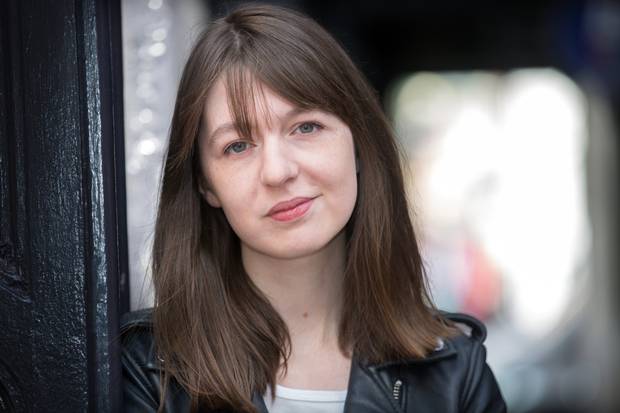
Sally Rooney is possibly the most talked-about writer of her generation (so much so that I will find myself using the adjective “Roonian” multiple times throughout this review) who skyrocketed to fame after the publication of her second novel Normal People, and whose work has been subject to sometimes merciless criticism.
Beautiful World, Where Are You makes a case for Rooney’s approach to representation, whether that be her characters or the world around them. Undeniably sentimental, the book returns to her concern with the complications of human connection and collaboration in an increasingly hostile and unforgiving world. Although Beautiful World does depart from many of the stylistic and thematic concerns of her earlier works, its central four – Alice, Eileen, Simon and Felix – like her other characters, are never quite able to fully acknowledge the essentiality of their connections to each other, in a way which is often frustrating but perhaps to be expected.
While Normal People drew on Rooney’s time at Trinity, Beautiful World instead takes its shape from Rooney’s own career: a quiet, private person, she has reached stratospheric levels of fame since the publication of Normal People, and of course, the accompanying television series. Writing in an email to her best friend Eileen, novelist Alice iterates the unpleasantries of literary fame: “I never advertised myself as a psychologically robust person, capable of withstanding extensive public enquiries into my personality and upbringing.”
Given Rooney’s privacy, clear talent, and spiky sense of humour in her writing, it’s easy to understand how public opinion quickly cast her into the role of one of her own heroines: young, mocking, witty women who are always the most intelligent person in the room.
Beautiful World adopts a distanced third-person viewpoint that preserves Alice’s dignity while writing about the trials and tribulations of fame: although the character externalises the struggles with rapid success, the reader is distanced from Alice’s inner life as she negotiates public scrutiny and negativity. Alice’s struggle with her self worth is apparent through her actions, but at no point is she psychologically laid bare for the ruthless scrutiny of the reader. The change of perspective is a welcome one, and a very good fit for Rooney: what this novel lacks in the intensity afforded by the close third-person it makes up for with the space it gifts her to expand and observe the world and the characters that she has created.
The change is (perhaps not solely) a result of Rooney’s desire to use this novel as a vehicle to chronicle the intertwining of the personal and the intellectual lives of two women: it is this urge which results in the novel becoming a manifesto for the author’s approach to novel writing, and indeed art itself.
Rooney has often been criticised for how “unreal” her characters are, but this is perhaps a misunderstanding of what she is trying to achieve. The construction of Beautiful World and character development has an almost Victorian flavour to it: the central four exist not as representations of real people and real lives, but rather allegorical-like vessels used by the author to explain and argue the philosophy of her worldview. The plot of the novel deals with the expected Roonian concerns of being a bad friend and having sex with the wrong people, but the long, wordy emails between the central pair discuss everything from aestheticism and literary crushes to the end of the world as we know it. Alice and Eileen are both fixated with the question of how to make sense of their shapeless world, and both return to the idea of a central principle, or “somewhere for [their] thoughts to return and rest”.
The answer to their question does not lie in their exploration of faith, nor their musings about Manet, but rather their actual act of correspondence itself. In one particularly beautiful scene – there is much to be said about Rooney’s literary skill and artfulness in this novel – Alice and Eileen embrace on a train platform after a long separation, watched by Simon, while the world continues as usual around them, and Rooney asks: “… were they in this moment unaware, or something more than unaware – were they somehow invulnerable to, untouched by, vulgarity and ugliness, glancing for a moment into something deeper, something concealed beneath the surface of life, not unreality but a hidden reality: the presence at all times, in all places, of a beautiful world?”
Eileen and Alice’s waxing and waning friendship is both a prism for which they can explore and challenge the world around them and a bedrock that they can both cling to. Boyfriends come and go, text messages are written and then never sent, but their shared intellectual life is a constant for both women. Their abilities to provide both intellectual infrastructure and emotional intelligence for each other is their connection to the “hidden reality” – more than enough for both of them to believe in the beautiful world. The rhetorical tone and lengthy philosophising can become at times a little tedious, which unfortunately undercuts some of the more profound moments between our central couple – also, the structure sometimes falls totally flat, as returning to Alice’s musings on Enlightenment aestheticism after an awkward, painful sex scene is more than slightly jarring.
Later in the novel, she describes our central four as coming together like a knotted necklace at the bottom of a drawer: this is perhaps an apt description for Beautiful World, Where Are You, a complicated knot of ideas, style and purpose whose undeniable beauty remains apparent despite the snarled entanglement.






